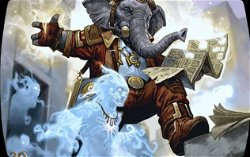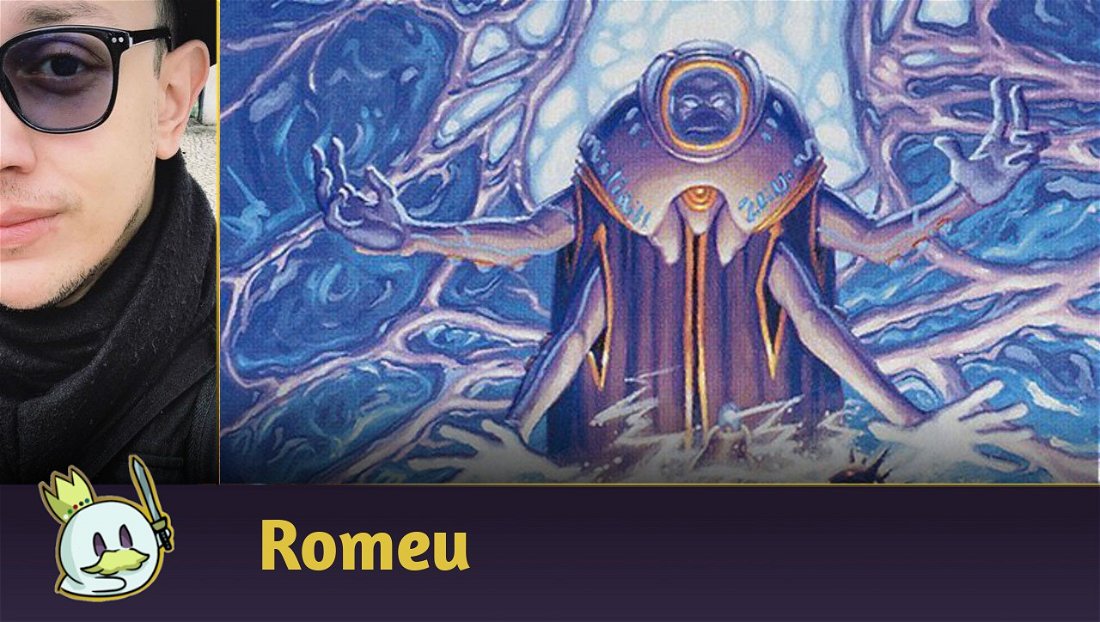Since the release of Lost Caverns of Ixalan, the Discover mechanic has caused controversy in Pioneer by establishing one of the more powerful combos the format has ever seen, capable of winning as early as the third turn.
Eventually, Geological Appraiser was banned, putting an end to Discover's dominance. But another variant, with more deckbuilding concessions, remained in the format and is among the Metagame competitors today - the version with Quintorius Kand,
In this article, we delve deeper into his combo and present a guide on how to play it in the current Metagame!
What is the Quintorius Combo?

The Quintorius Combo is a strategy focused on the interaction of Quintorius Kand with spells played from exile and the possibility of copying it with Spark Double, which will copy the Planeswalker and use its Discover ability again to find another Spark Double, and repeat the process as each copy of Quintorius deals damage to the opponent.
This loop can also be performed with Trumpeting Carnosaur, which will eventually pull Quintorius Kand, which will pull Spark Double to copy Quintorius.

As an archetype who seeks to go to five mana as early as possible, with many concessions to work and having high mana requirements, the Quintorius Combo runs efficient spells with alternative costs and/or that we can reduce in some way. Their objective is to hold the opponent or speed up the game until we find the pieces we need.
Unlike the combo that broke Pioneer, in addition to being one turn slower, this version has more response windows and more possibilities of “whiffing” if the opponent destroys Quintorius in response to his Discover ability. There are ways to play around this possibility (like casting Trumpeting Carnosaur first and hoping it finds Quintorius), but every turn wasted trying to play around the answers is another opportunity for your opponent to win the game before you do.
The Decklist
This is the list I ran in Magic Online Leagues last weekend.
I confess that, unlike other combos, this one requires a lot of understanding of the concessions in the Sideboard to create a coherent plan, and even I'm not sure of the relevance of all the cards present in these spaces.
Some lists run Krenko's Buzzcrusher to play against Lotus, or with Elesh Norn, Mother of Machines to block ETB effects and double the potential of cards like Trumpeting Carnosaur and others, like me, looked into Shark Typhoon for an alternative game plan for when we can't blindly rely on the combo.
Maindeck

Our combo.
Quintorius Kand and Trumpeting Carnosaur are our enablers. The dinosaur also has extra functions on the list, such as becoming a threat in longer games and removal in the early game, making it the most flexible card on the list.
Spark Double is our main way of closing the combo by copying Quintorius Kand, but it can also be used to copy other creatures as a “plan B”
Release to the Wind is extremely flexible in this list: it protects Quintorius Kand from removal, resets Spark Double, casts Trumpeting Carnosaur a second time, and allows us to chain the combo with more damage and less space.
In theory, this was the first card that raised doubts about its usefulness. Today, I can't imagine any reason not to include it on the maindeck.

Our ramp.
Because we are notoriously slow and cannot establish good attrition plans, we need to focus on correcting our mana base to cast Leyline Binding or ensuring the right curve to start the combo.
Beanstalk Giant and Greater Tanuki speed up a turn while having their quirks: the giant is an alternative threat in some games, while the Tanuki cannot be countered. It's common for them to come out in some matchups where accelerating our game plan must be replaced by dealing better with the opponent's plan - After all, there's no point trying the combo on the fourth turn and taking a No More Lies or removal in response.
Herd Migration provides extra breathing space, fixes our mana, and turns into an alternate win condition. There are games where an army of 3/3 creatures is more efficient as a threat than the combo itself.

Our interaction.
Leyline Binding is the best answer we have for countless situations in the current Metagame, and managing to use it as early as the second of the turn for just one mana makes it essential.
Bedeck // Bedazzle is our way to hold Aggro without giving up too many concessions. Its six-mana side is rarely used, but having a +3/-3 effect that we can use on our opponent's turn is worth the effort.
There are times when I would prefer Virtue of Persistence over it, but with the rise of Boros Heroic and the presence of Abzan Amalia among the top five decks in the format, having an instant-speed answer is essential.

Our triomes cycle prioritizes access to green, black, and red mana to access Bedeck // Bedazzle and a ramp spell with the same cards. Therefore, the lands in combinations 


Shock Lands also follow this pattern and always seek to provide access to one or more of these colors, with Stomping Ground being the most important among them, followed by Sacred Foundry, which offers white mana to cast Quintorius Kand.
The basics are meant to be sought by our ramp. Despite being rare, there are situations where this deck severely punishes the mana base and limits our play options each turn, being the necessary price to pay for the Domain subtheme.
Sideboard

Dragonlord Dromoka is the perfect mix between an alternative wincondition and “Lock” against removals and counterspells when our opponent cannot remove it, in addition to offering a respectable clock and an important life gain in more aggressive matchups.
Thought Distortion is our way to “override” Control and counterspells when Dromoka is not enough. Using it on one turn will, most of the time, give you the security to close the combo on the next turn.

Virtue of Persistence offers more coverage against Aggro while also being useful in holding back the Midrange game and extracting value from the enchantment in later turns.
Vanquish the Horde is a necessity against go-wide decks like Boros Convoke, but we can also use it against Abzan Amalia.
Consign // Oblivion is a comprehensive answer to unwanted situations. It, for example, deals with Damping Sphere, as well as being another answer to Amalia's combo before the opponent starts looping.

Boseiju, Who Endures is another answer to Damping Sphere while having enough versatility to get into other matchups, like dealing with a manland or some troublesome enchantment.
Shark Typhoon is an alternative win condition that doesn't hinder our combo and still offers a draw if we cycle it. This slot is highly flexible and can transform into any other card to match your Metagame's needs.

In addition to not opening any concessions to our list, Keruga, the Macrosage interacts well with our “plan B” when the combo doesn't work, being an excellent card advantage engine and threat, which we can seek from the Sideboard in every game.
Sideboard Guide
Izzet Phoenix
IN

OUT

Rakdos Vampires
IN

OUT

Azorius Control
IN

OUT

Abzan Amalia
IN

OUT

Lotus Combo
IN

OUT

Conclusion
That's all for today!
If you have any questions or suggestions, feel free to leave a comment!
Thanks for reading!

















— Kommentare 0
, Reaktionen 1
Sei der erste der kommentiert